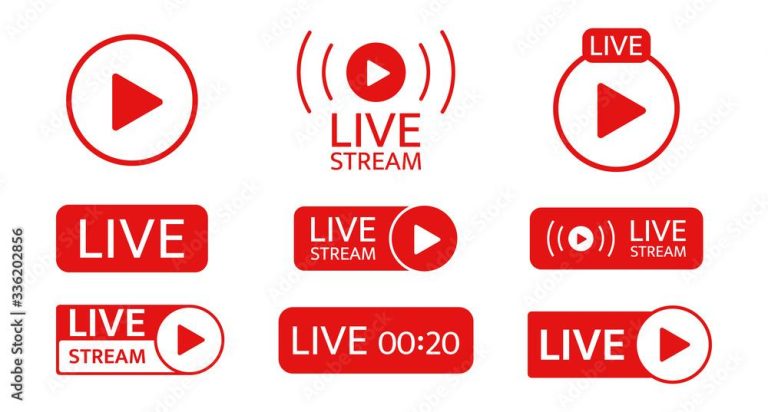Short-form video on platforms such as TikTok, Instagram and YouTube is rapidly becoming the main way many young people encounter the news, displacing homepages, broadcasts and even text-based feeds. The shift, driven by algorithmic recommendations and creator-led explainers, is changing not only where audiences look for information but how stories are told-and trusted.
In place of headlines and bylines, news increasingly arrives as seconds-long clips that blur lines between reporting, commentary and entertainment. Influencers and independent creators now compete with legacy outlets for attention, while the speed and style of vertical video favor hot takes and visuals over depth, raising fresh questions about accuracy, context and source transparency.
Newsrooms are racing to adapt formats and workflows for mobile video, platforms are revisiting their policies on news distribution, and regulators and educators are weighing the risks of misinformation against the benefits of broader reach. With elections looming in multiple countries, the battle for young audiences’ attention-and trust-has shifted decisively to the scroll.
Table of Contents
- TikTok and YouTube Shorts now set the news agenda for young audiences as traditional outlets lose daily reach
- Algorithm driven feeds reward emotion and speed over context reshaping trust and participation
- Editors should fund vertical video teams and transparent sourcing while schools teach verification and platforms tighten recommendation guardrails
- In Conclusion
TikTok and YouTube Shorts now set the news agenda for young audiences as traditional outlets lose daily reach
Short-form platforms such as TikTok and YouTube Shorts increasingly dictate the day’s talking points for under‑30s, while legacy brands report shrinking daily touchpoints; editors track viral arcs to shape coverage priorities, and creator‑journalists act as micro desks, packaging breaking updates into bite‑size, vertical video that outruns articles, creating a feedback loop where algorithmic amplification rewards emotion, speed, and personality‑driven explainers over conventional formats.
- How momentum builds: trending sounds, stitches, duets, and remix culture elevate narratives within hours-often before broadcasters air them.
- Newsroom response: staff shifts toward social video, caption‑first edits, and verification stacks (OSINT, geolocation, frame‑by‑frame analysis) to vet clips in real time.
- Risks and gaps: context collapse, opaque recommendations, and creator‑to‑creator recycling that can launder sources or inflate claims.
- Openings for impact: reaching non‑news‑seekers, co‑publishing with creator reporters, and delivering concise explainers without sacrificing accuracy.
- Signals to monitor: platform rules on political content, funding for local short‑form beats, and whether push alerts mirror what trends rather than what breaks.
Algorithm driven feeds reward emotion and speed over context reshaping trust and participation
Across TikTok, Reels, and Shorts, recommendation engines elevate clips that spark quick reactions, pushing high-arousal visuals and captions ahead of background and nuance; the result is a news diet where credibility is often inferred from engagement signals-likes, stitches, duets-rather than sourcing, and where the most visible narratives are those optimized for velocity, personality, and meme-ready formats, shifting trust from institutions to individual creators and recasting participation as remixable performance more than deliberation.
- Verification lag: Speed privileges first takes over corroborated updates.
- Context collapse: Complex events reduced to seconds-long, decontextualized beats.
- Creator-centric authority: Charisma and consistency stand in for institutional signals.
- Emotion-led discovery: Outrage, awe, and empathy drive reach and repetition.
- Interactive amplification: Stitches/duets turn audiences into co-distributors of narratives.
- Metric bias: Algorithmic lift becomes a proxy for importance, shaping what young users see-and believe-first.
Editors should fund vertical video teams and transparent sourcing while schools teach verification and platforms tighten recommendation guardrails
As social feeds overtake homepages for under-30 audiences, accountability now hinges on a coordinated reset: newsrooms must produce mobile-native clips with visible provenance, classrooms have to graduate students fluent in verification, and platforms need stronger guardrails that reward credible reporting over velocity-especially during breaking news, elections, and crises where synthetic media and recycled footage routinely outpace corrections.
- Newsrooms: Stand up vertical-video desks; add on-screen source labels and timestamps; link to primary documents in captions; publish correction logs; adopt C2PA-style provenance; train reporters in mobile OSINT; moderate comments for context, not just civility.
- Schools: Embed verification labs in curricula; teach lateral reading, reverse image and video analysis, geolocation basics, and AI-synthetic detection; assess students on source trails; include ethics of consent and context in user-generated content.
- Platforms: Downrank unverifiable breaking clips; require provenance and disclosure tags; add friction to resharing fast-moving rumors; expand appeals and transparency dashboards; label recycled footage; tighten recommendations to prioritize outlets with proven sourcing records.
In Conclusion
As feeds replace front pages for a generation, the gatekeepers of news are no longer just editors but algorithms and personalities. Publishers are racing to adapt formats and workflows to vertical video, while platforms recalibrate policies and creators step into roles once occupied by correspondents. The result is a faster, more conversational news cycle-and a more volatile one.
The challenge now is less about reach than reliability. Verification, context and transparency have to travel at the speed of the scroll. That means clearer sourcing in clips, sustained investment in newsroom video teams, and renewed efforts in digital news literacy to counter misinformation that thrives in short-form formats.
With major elections, global crises and rapid advances in AI-generated media ahead, the trajectory is unlikely to slow. Whether this shift strengthens or weakens public understanding will hinge on choices made by platforms, publishers and audiences alike. The real metric won’t be views, but how well young people are informed.


